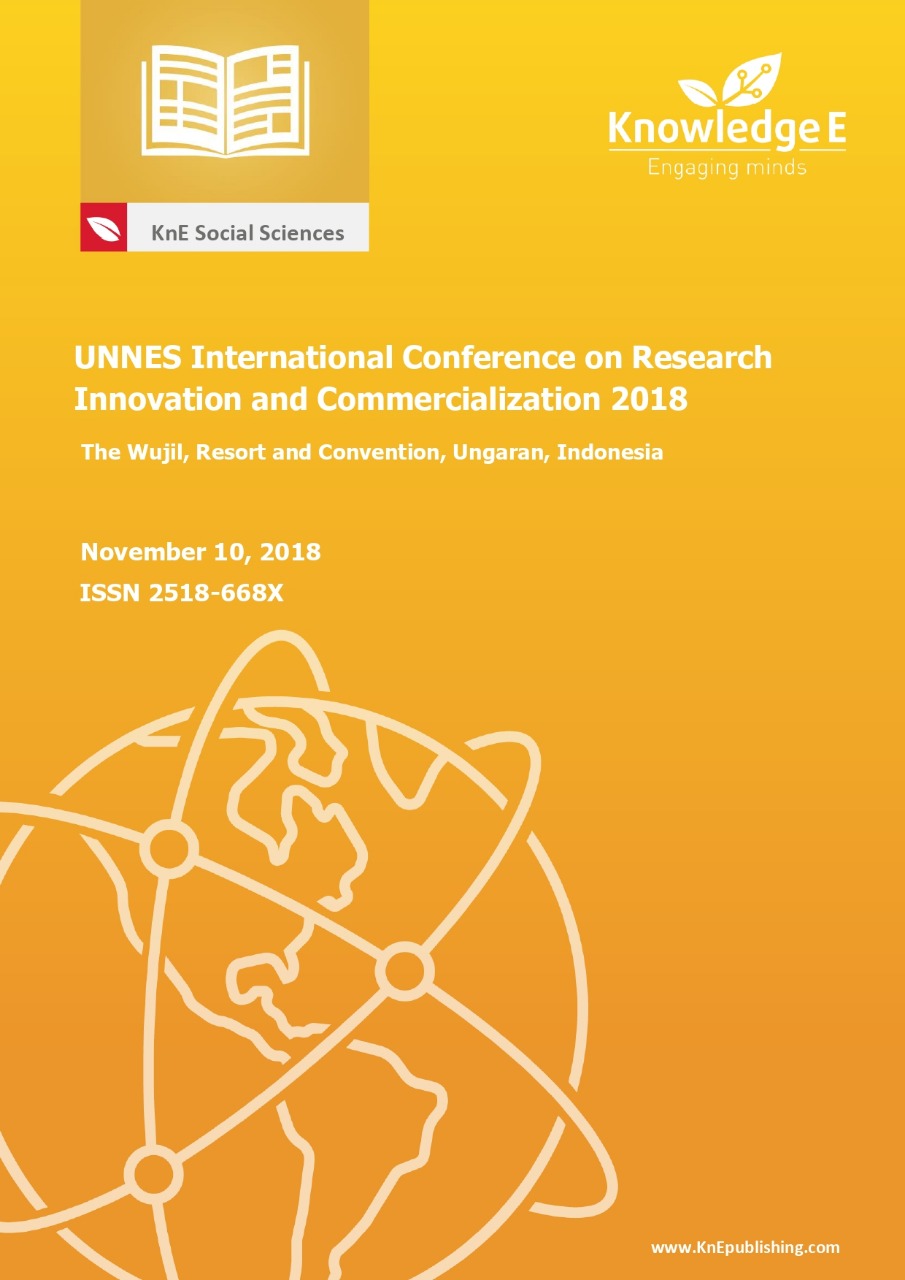Teaching Material for Human Literacy: Multicultural-Charged Explanatory Text for Reducing Social Conflict
DOI:
https://doi.org/10.18502/kss.v3i18.4736Abstract
Languageisasocialphenomenonthatisnotseparatefromthespeakercommunity.The existence of text represents the speaker in various interaction functions. This research was conducted to produce Indonesian language material with multicultural content to reduce social conflict in the younger generation and optimize the implementation of the 2013 curriculum. The subject of this research is teaching materials for explanatory textsinwhichtherearerealmulticulturalvaluesinsociety.Researchdatawascollected through a focus group discussion between researchers and a number of Indonesian languageteachers.Thedevelopmentofafactualmodelwascarriedoutbyresearchers with a team of Indonesian Language lecturers with reference to the findings of the theoretical teaching material model. Indonesian teaching materials with multicultural content in reducing social conflict in the younger generation are developed in aspects of content, language, and presentation. The diversity of the Indonesian nation on the one hand has a positive value, but on the other hand it stores negative values that are unavoidable as innovations in the aspect of content. The diversity of the Indonesian peopleturnedouttobevulnerabletoactsofviolenceduetosocialconflict,especially intheyoungergeneration.Multiculturalawarenessisneededontheyounggeneration of Indonesia through learning Indonesian as a form of humanist literacy.
Keywords: humanist literacy teaching material, multicultural explanatory text, social conflict
References
Alwi, Hasan. (2003). “Pemberdayaan Bahasa Indonesia dalam Menghadapi Kemungkinan Timbulnya Kecemburuan Global”. Paper presented at the International Seminar on Prospects for Development of Indonesian Studies in the Context of Cultural Diversity, June 25, 2002, at Patra Jasa Hotel Semarang.
Anderson, Benedict. (2003). Imagined Communities: Komunitas-komunitas Terbayang. Yogyakarta: Insist and Pustaka Pelajar.
Halliday, M.A.K. & Hasan, R. 1992. Bahasa, Konteks, dan Teks: Aspek-Aspek Bahasa dalam Pandangan Semiotik Sosial. Translation by Barori Tou. Yogyakarta: Gajah Mada University Press.
Kemdikbud. (2013). Buku Teks Bahasa Indonesia Kurikulum 2013. Jakarta: Kemdikbud.
Priyatni, Endah dan A. S. Wahono. (2012). “Model Penyusunan Bahan Ajar Membaca Berbasis Pendidikan Multikultural dan E-Learning”. LITERA, Volume 11, Number 1, April 2012, hlm. 1 – 14.
Rogers, Karl. 2007. “Foucault’s Discourse,” www.lancs.ac.uk/depts/philosophy/ awayma.ve. downloaded November, 23
Santoso, Anang. 2008. “Jejak Halliday dalam Linguistik Kritis dan Analisis Wacana Kritis” dalam Jurnal Bahasa dan Seni, Volume 36, Number 1, February 2008.
Tolosa, Constanza, C. Biebricher, & M. East, at al. (2018). “Intercultural Language Teaching as a Catalyst for Teacher Inquiry”. Teaching and Teacher Education, 70 (2018), 227-235.
Unwanullah, Arif. 2012. “Transformasi Pendidikan untuk Mengatasi Konflik Masyarakat dalam Perspektif Multikultural”. Jurnal Pembangunan Pendidikan: Fondasi dan Aplikasi, Volume 1, Number 1, June 2012, page 45 – 57.
Zulaeha, Ida, Eva Banowati, dan Ahmad Syaifudin. 2015. “Pengembangan Bahan ajar Bahasa Indonesia Bermuatan multikulturaldalam Mereduksi Konflik Sosial pada Generasi Muda”. Second Year Research Report. Semarang: Semarang State University

